15 Article IV: 1 ½ Position
We study 1 ½ position after fourth position, partly because it is easy to find (the hand and thumb shift a half-step up from first position), and partly because we can consider it a “raised first position.” This is because it makes it possible to play a major third, and thus to play the major scales of D, A, and E without significantly leaving first position.
The player puts the first finger in place in first position, then goes up a half-step with the thumb and hand so that the first finger is in C on the A-string (enharmonically spelled as B-sharp). This can be referred to as raised first position or as lowered second position.
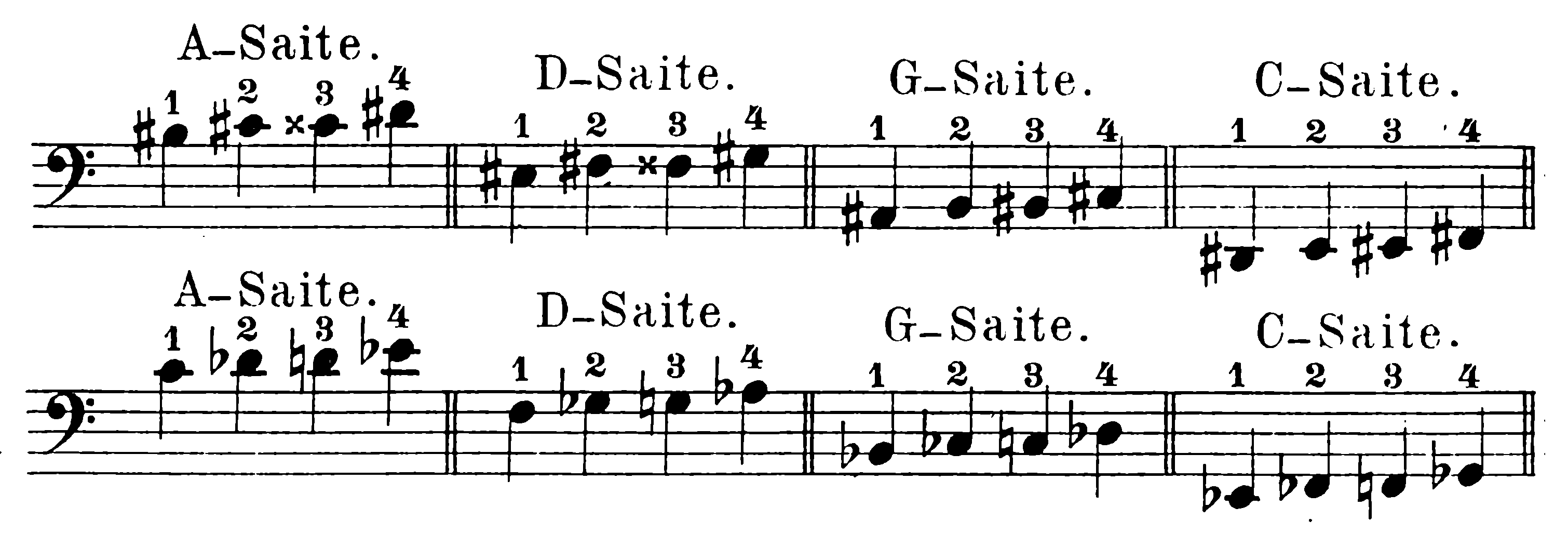
Exercises in 1 ½ Position – Closed Hand Position
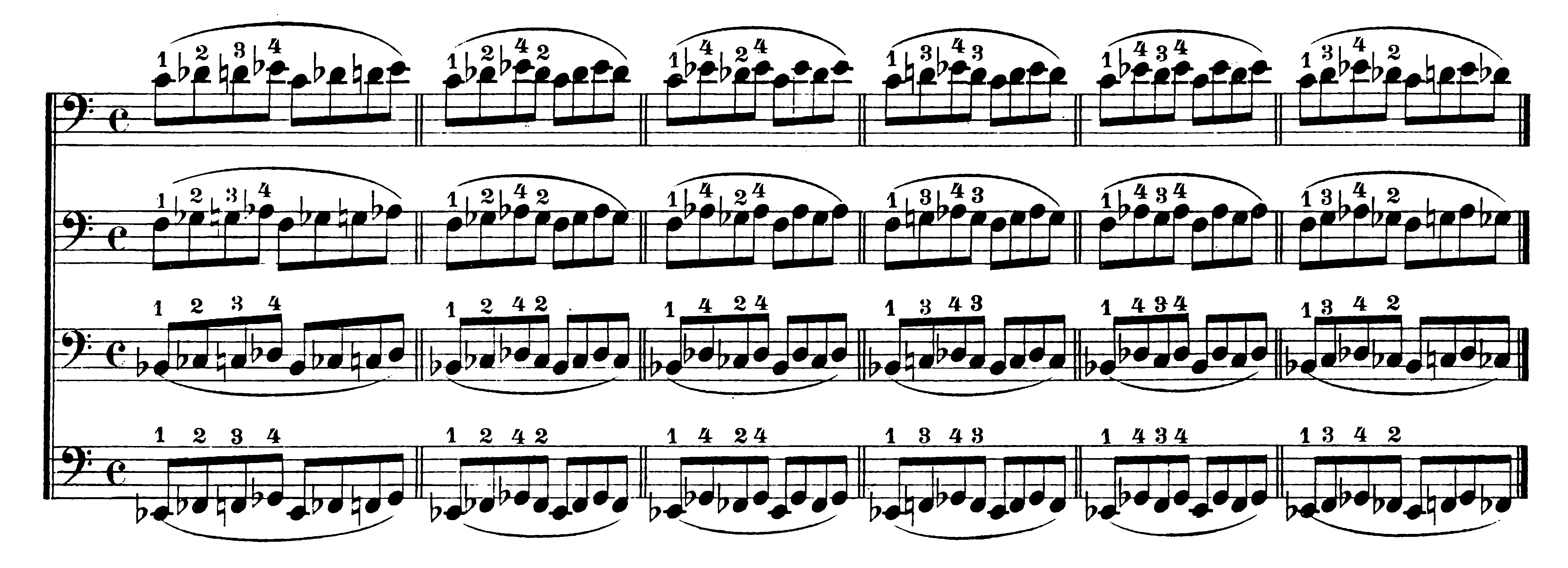
Example in Raised First Position



Example in Lowered Second Position
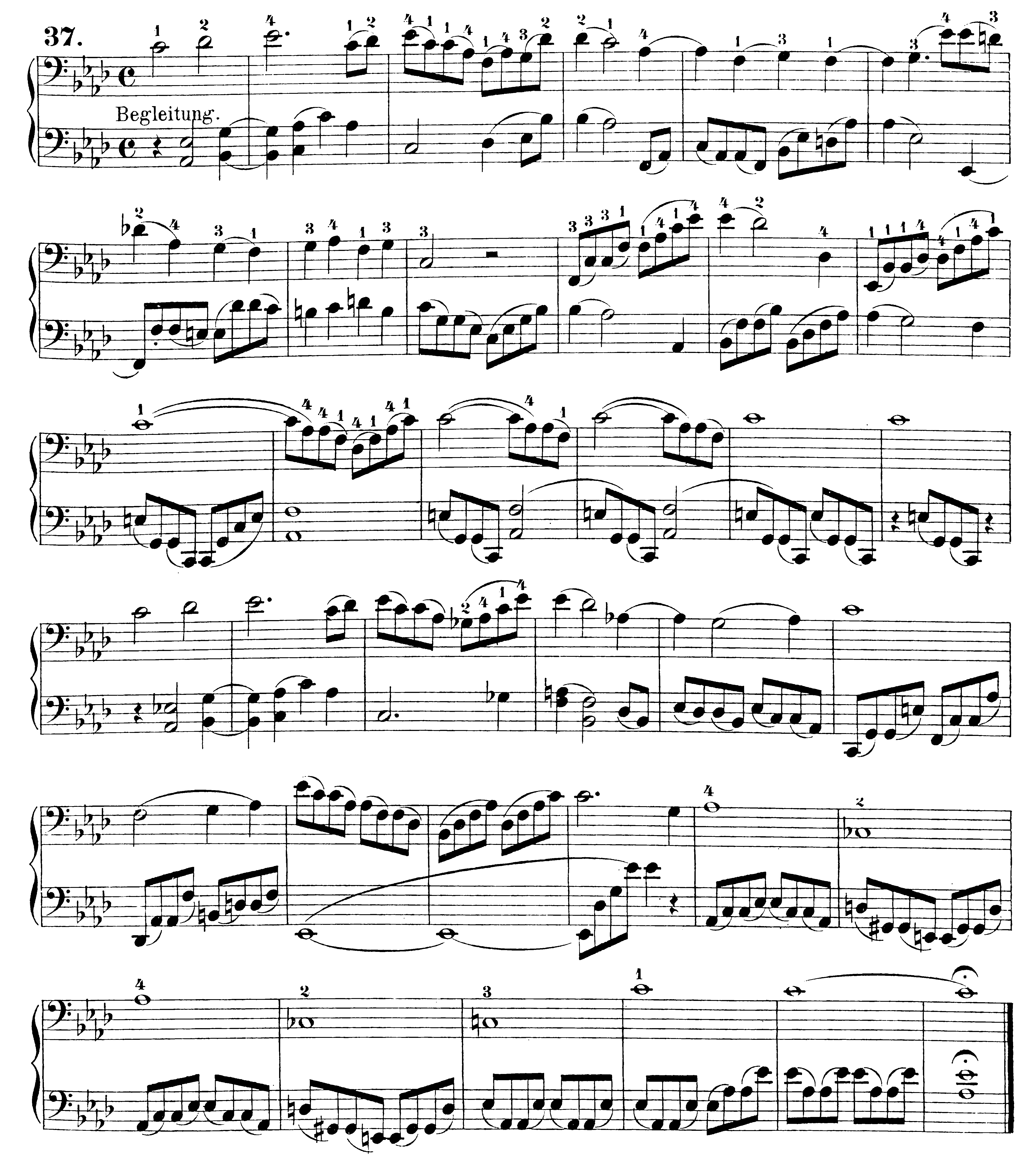
Extensions in 1 ½ Position
This is similar to what we do in the first and fourth position. We move the first finger back by a half-step, creating an extension in 1 ½ position—which, in this case, is usually the raised first position.
Exercises in 1 ½ Position with Extensions
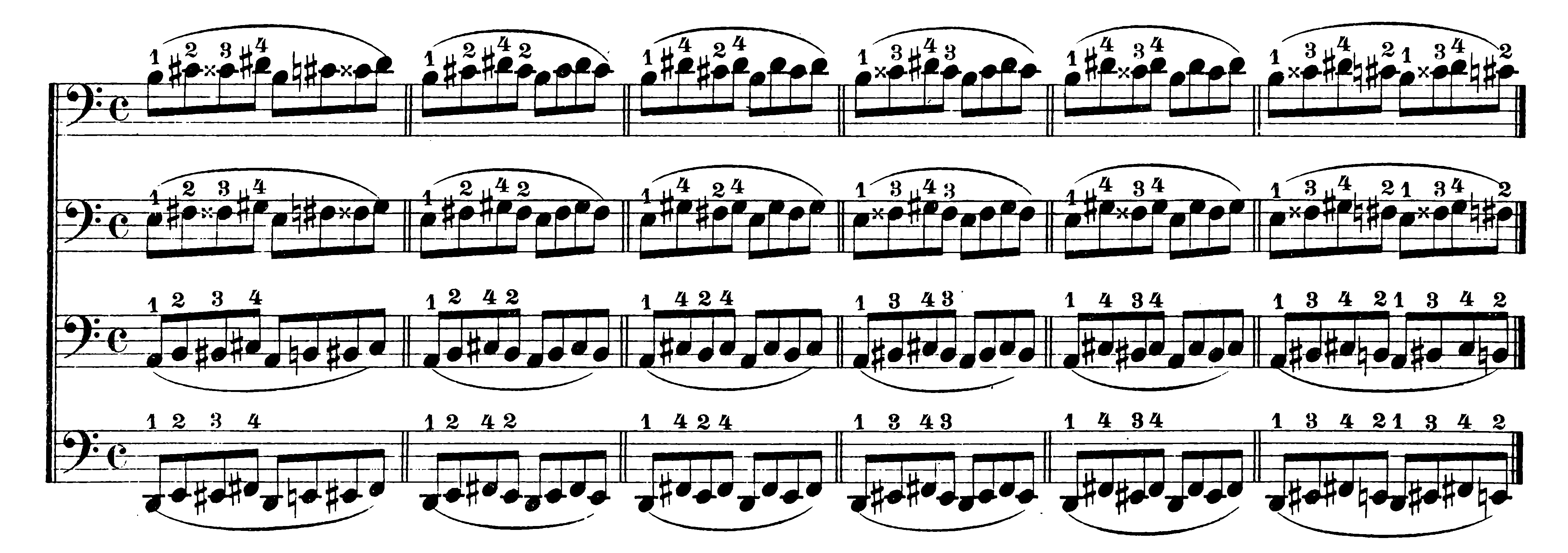
Example in Extended Position
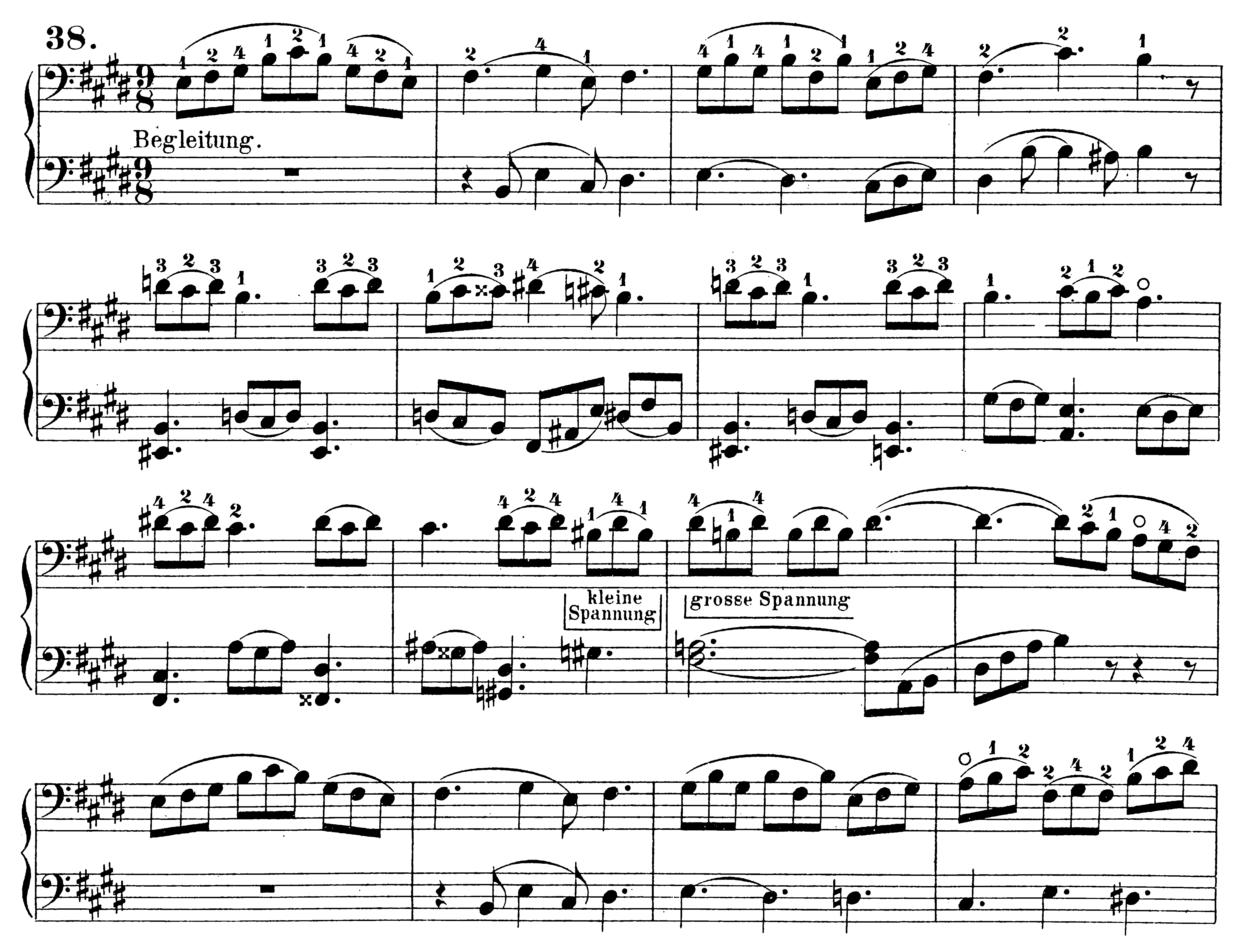
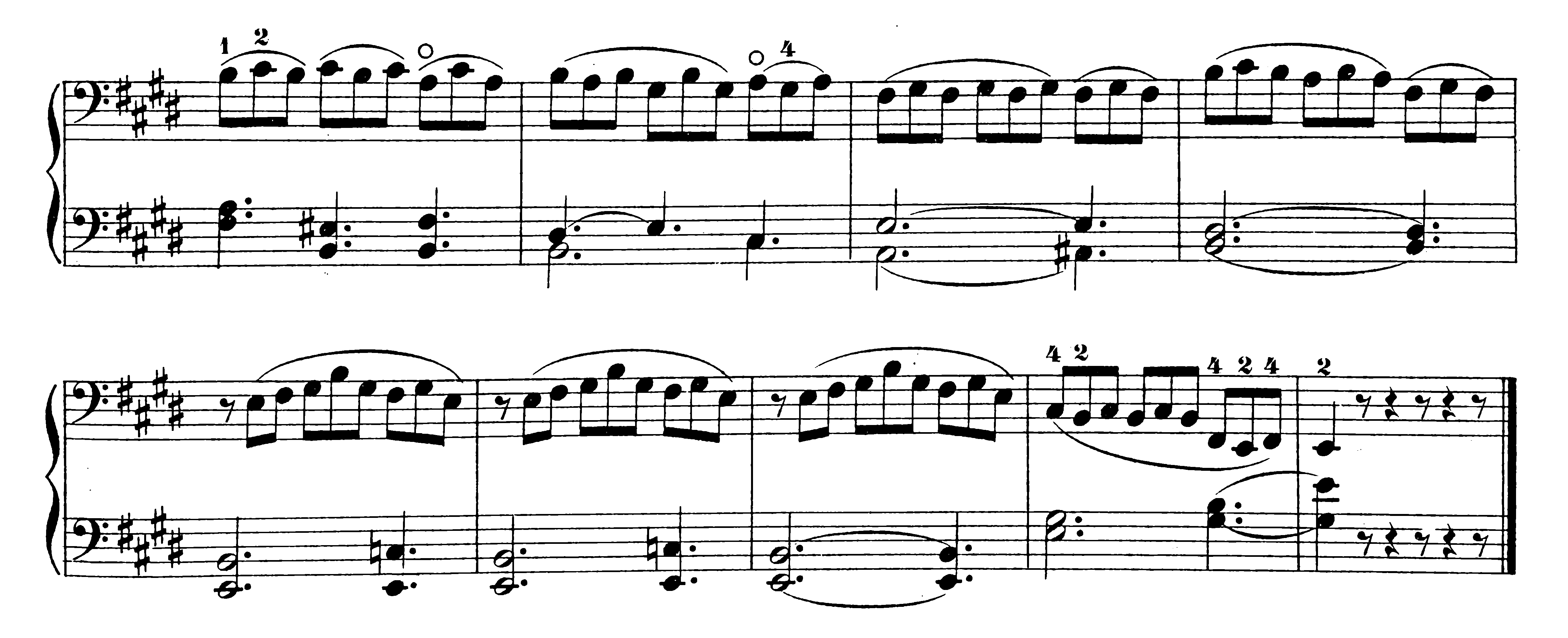
Extensions in 1 ½ position make it possible to play the scales of D, A, and E major without the first finger having to change its place in first position: it just moves the thumb up a half-step, if necessary, to facilitate the extension.[1]
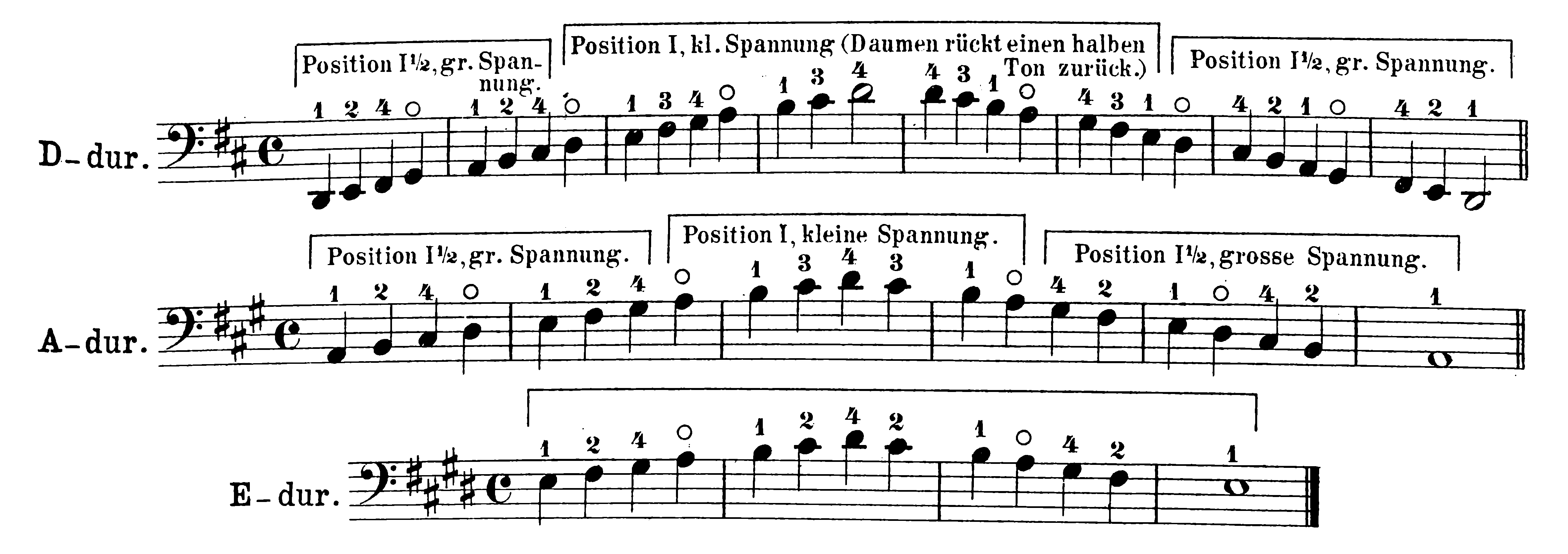
- D-dur = “D major”; Position I ½, gr. Spannung = “1 ½ position, extended”; Position I, kl. Spannung (Daumen rückt einen halben Ton zurück) = “First position, closed (thumb moves back by a half-step)”; Position I ½, gr. Spannung = “1 ½ position, extended”; A-dur = “A major”; Position I ½, gr. Spannung = “1 ½ position, extended”; Position I, kleine Spannung = “First position, closed”; Position I ½, grosse Spannung = “1 ½ position, extended”; E-dur = “E major” ↵
